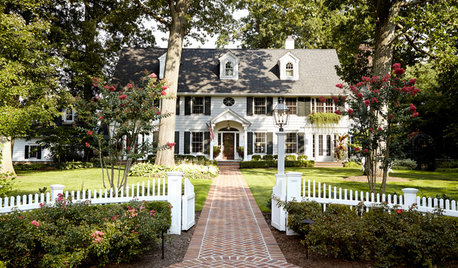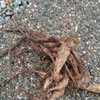Questions About Transplanting Daffodils and Tulips Now
val1
9 years ago
Related Stories

PLANTING IDEASEasygoing Tulip Ideas From a Grand California Garden
Gather up these ways to use tulips to make a spring garden of any size overflow with beauty
Full Story
EXTERIORSCurb Appeal Feeling a Little Off? Some Questions to Consider
Color, scale, proportion, trim ... 14 things to think about if your exterior is bugging you
Full Story
TASTEMAKERS5 Questions From ICFF: Lindsey Adelman
The inventive designer takes a break from New York's International Contemporary Furniture Fair to talk about her artistic lighting fixtures
Full Story
FURNITUREModern Icons: The Saarinen Tulip Dining Table
18 Dining Combinations Featuring the Sleek Pedestal Base
Full Story
GARDENING GUIDESNew Ways to Think About All That Mulch in the Garden
Before you go making a mountain out of a mulch hill, learn the facts about what your plants and soil really want
Full Story
WORKING WITH PROSWhat to Know About Concept Design to Get the Landscape You Want
Learn how landscape architects approach the first phase of design — and how to offer feedback for a better result
Full Story
WORKING WITH PROSWhat Do Landscape Architects Do?
There are many misconceptions about what landscape architects do. Learn what they bring to a project
Full Story
LIFEHouzz Call: What Has Mom Taught You About Making a Home?
Whether your mother taught you to cook and clean or how to order takeout and let messes be, we'd like to hear about it
Full Story
DECORATING GUIDESHouzz Tour: Much to Like About This Traditional Beauty
New elements mix well with old in a New Jersey family’s elegant and comfortable colonial revival home
Full Story
SOUTHEAST GARDENINGSoutheast Gardener's April Checklist
Stock up on herbs, keep clippers away from the daffodils and watch for signs of a major impatiens threat
Full Story


Tiffany, purpleinopp Z8b Opp, AL
val1Original Author
Related Professionals
Eden Prairie Landscape Architects & Landscape Designers · Fort Lee Landscape Architects & Landscape Designers · Glassmanor Landscape Architects & Landscape Designers · Harrison Landscape Architects & Landscape Designers · Clermont Landscape Contractors · Peabody Landscape Contractors · Springfield Landscape Contractors · Westwood Landscape Contractors · Bedford Landscape Contractors · Brandon Landscape Contractors · Metairie Landscape Contractors · Mission Viejo Landscape Contractors · Oxnard Landscape Contractors · Forest Hill Landscape Contractors · Baileys Crossroads Landscape ContractorsTiffany, purpleinopp Z8b Opp, AL
OldDutch (Zone 4 MN)
katob Z6ish, NE Pa
Tiffany, purpleinopp Z8b Opp, AL